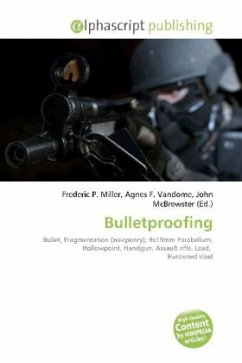Please note that the content of this book primarily consists of articles available from Wikipedia or other free sources online.Bulletproofing is the process of making something capable of stopping a bullet or similar high velocity projectiles e.g. shrapnel. The term bullet resistance is often preferred because few, if any, practical materials provide complete protection against all types of bullets, or multiple hits in the same location. Bullet designs vary widely, not only according to the particular firearm used, but also within individual cartridge designs. As a result, whilst so-called "bullet-proof" panels may successfully prevent penetration by standard 7.62x39mm bullets containing lead cores, the same panels may easily be defeated by 7.62 x 39 mm armor piercing bullets containing hardened steel penetrators. Bullet-resistant materials are usually rigid, but may be supple. They may be complex, such as Kevlar, Lexan, and carbon fiber composite materials, or they may be basic and simple, such as steel or titanium. Bullet resistant materials are often used in law enforcement and military applications, to protect personnel from death or serious injuries.
Bitte wählen Sie Ihr Anliegen aus.
Rechnungen
Retourenschein anfordern
Bestellstatus
Storno








